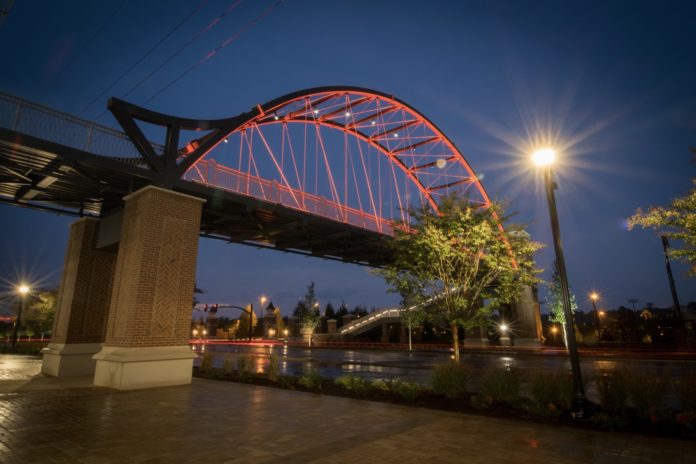By Jennifer Burk
TELEGRAPH STAFF WRITER
The project resembles something made with Tinkertoys – rods connected together by washers – but it’s much more complex.
These rods and washers – called struts and nodes – are part of a robot being developed by NASA to explore the terrain of other planets. The struts can get longer or shorter, allowing the robot to explore places that current robots can’t.
The job of two Mercer University students and a professor is to figure out how to control the robot.
“There are lots of engineering issues with this,” said Philip Olivier, a professor of electrical and computer engineering at Mercer. “Each strut has to move in a way that is coordinated with some other strut. Otherwise, it will jam.”
Other robots use wheels or tracks to move, but they can’t perform certain tasks, such as navigating across a gully or climbing up a chimney, he said.
By being able to expand certain legs and shorten other ones on this robot, scientists can make it roll or climb.
This summer, Olivier and two students, junior Bryan Solomon and senior Lauren Janelle, spent 10 weeks at Goddard Space Flight Center in Maryland working on the project.
Olivier said they’re still working on the control system, but it’s difficult because they don’t have access to the same software they had during the summer. They have paper and pencil designs and computer simulations, but they have not actually implemented and experimented on it yet.
In the meantime, Janelle, an electrical engineering major, has made the work part of her senior design project.
“I’m working with a team, and we are pretty much trying to make a smaller version of what we were working on this summer,” she said.
The one at NASA is complicated and has a lot of pieces, she said. She wants to make a small-scale robot that works the same way and whose functions can be applied to the big robot.
“It was getting so complicated by the end of the summer trying to make it work,” Janelle said. “We thought this was a good answer to that.”
She said she would like to work at Goddard again next summer, because her summer experience there went so well.
“It was really reassuring to know that I can actually do engineering work because it was kind of the first real internship I had,” she said.
Solomon, also an electrical engineering major, said it was good to be able to explore the engineering industry.
“It was pretty awesome because you had real engineers there, and you could go and talk to other people and draw on their knowledge.”
The work was part of a program with NASA’s Exploration Systems Mission Directorate that brought together about 200 students and professors from across the country. The Mercer team worked with students from Hope College in Michigan, Olivier said.
“The whole purpose of this project is to develop a long-term relationship between NASA and the university, so that engineering students will come out knowing what kind of things NASA needs,” he said.
Representatives from the administration are supposed to come to Mercer this year.
“Hopefully when NASA comes, they will be not only looking around to see what we’re doing, … but also they’ll come and try to encourage other students to apply for this kind of program or think about NASA as an employer,” he said.
Olivier has worked with NASA before, but this was the first year students had to be an integral part of the research.
NASA can’t guarantee the students’ products will be used in space, but the administration is “keenly interested in nurturing the next generation of scientists and engineers,” Beth Dickey, a NASA media relations specialist, wrote in an e-mail.
© 2006 Macon Telegraph and wire service sources. All Rights Reserved.
http://www.macon.com










